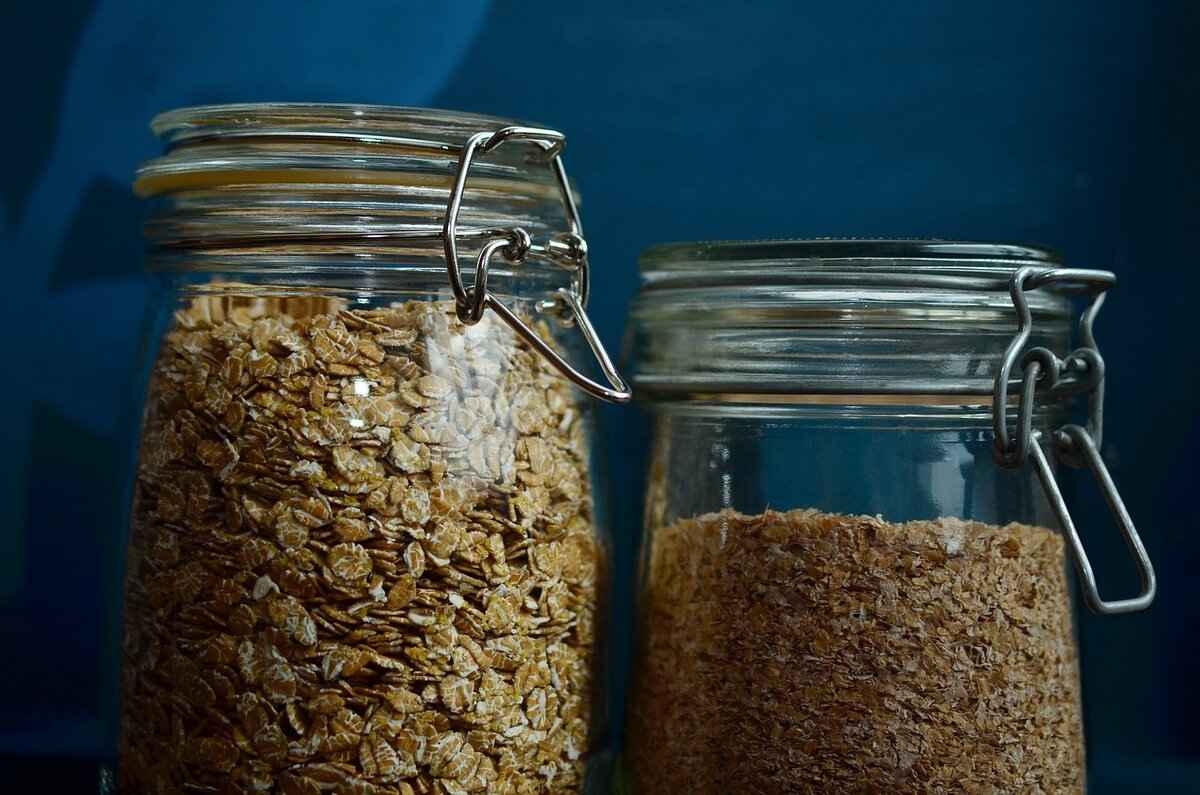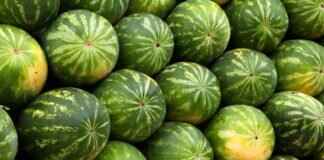This article delves into the importance of bonito flakes in Japanese cuisine, highlighting their diverse uses, notable health benefits, and the culinary techniques that amplify flavor profiles in various dishes.
What Are Bonito Flakes?
Bonito flakes, known as katsuobushi, are thin shavings derived from dried skipjack tuna. Their distinctive umami flavor makes them an essential ingredient in Japanese cooking, enhancing the taste of numerous dishes.
How Are Bonito Flakes Made?
The creation of bonito flakes is a meticulous process involving smoking, drying, and fermenting the fish. This intricate method reveals how the flakes develop their unique flavor and aroma, making them a prized ingredient in many culinary applications.
The Smoking Process
Smoking is a vital step in producing bonito flakes. This technique not only preserves the fish but also infuses it with a rich, smoky aroma that complements various Japanese dishes.
Types of Wood Used
Different woods, such as oak and cherry, are utilized in the smoking process. Each wood type contributes unique flavor notes, making the choice of wood crucial for the final product.
Fermentation Techniques
After smoking, the fish undergoes fermentation, which enhances its umami profile. This process is essential for developing the deep, rich taste associated with high-quality bonito flakes.
Shaving and Drying
Once the fish is smoked and fermented, it is shaved into thin flakes. This step is critical for ensuring that the bonito flakes dissolve easily in liquids, effectively releasing their flavors.
What Are the Culinary Uses of Bonito Flakes?
Bonito flakes are incredibly versatile and can be found in various dishes, from soups to salads. Their ability to enhance umami flavors makes them a favorite among chefs and home cooks alike.
- In Dashi Broth: Dashi, a fundamental Japanese stock, often incorporates bonito flakes. This broth serves as the base for many traditional dishes, showcasing the flakes’ ability to elevate flavors.
- As a Topping: Sprinkling bonito flakes on dishes like okonomiyaki or takoyaki adds a savory touch. The flakes not only enhance flavor but also provide visual appeal, making dishes more enticing.
What Are the Health Benefits of Bonito Flakes?
In addition to their culinary applications, bonito flakes offer numerous health benefits, including high protein content and essential nutrients, making them a nutritious addition to various meals.
- Rich in Protein: Bonito flakes are an excellent source of protein, vital for muscle repair and overall health. Incorporating them into meals can help meet daily protein requirements.
- Low in Calories: Being low in calories, bonito flakes are an excellent option for those looking to add flavor without significantly increasing caloric intake, making them ideal for weight management.
How to Store Bonito Flakes Properly?
Proper storage of bonito flakes is essential to maintain their flavor and freshness. Understanding the best practices ensures they remain a flavorful ingredient in your kitchen.
- Optimal Storage Conditions: Bonito flakes should be stored in a cool, dry place, preferably in an airtight container. This helps prevent moisture absorption and preserves their distinctive flavor.
- How Long Do They Last? When stored correctly, bonito flakes can last for several months. However, checking for any signs of spoilage is crucial to ensure quality before use.
Where to Buy Quality Bonito Flakes?
Finding high-quality bonito flakes can enhance your cooking experience. Knowing where to look can make a significant difference in flavor and quality.
- Local Asian Markets: Local Asian grocery stores often carry a variety of bonito flakes. Shopping at these markets allows you to explore different brands and qualities, ensuring you find the best product for your needs.
- Online Retailers: Many online retailers specialize in Japanese ingredients, offering a wide selection of bonito flakes. Reading reviews and checking product details can help you make informed purchasing decisions.

What Are Bonito Flakes?
Bonito flakes, known as katsuobushi in Japanese, are a quintessential ingredient in Japanese cuisine. These delicate, dried fish shavings, made primarily from skipjack tuna, are celebrated for their unique umami flavor, which adds remarkable depth and complexity to a wide array of dishes. Understanding what bonito flakes are and how they are made can greatly enhance your culinary repertoire.
Bonito flakes are thin shavings derived from the smoked and fermented flesh of skipjack tuna. The process of transforming the fish into these flavorful flakes is intricate, involving several steps that contribute to their distinctive taste and aroma. Bonito flakes are not just a seasoning; they are a fundamental element in many traditional Japanese dishes, serving to elevate flavors and provide a savory depth that is hard to replicate.
The production of bonito flakes involves a meticulous process that combines smoking, fermentation, and drying. This elaborate method is what gives bonito flakes their rich flavor profile.
Smoking is a crucial step in creating bonito flakes. The fish is traditionally smoked over a wood fire, often using high-quality woods such as oak or cherry. This not only preserves the fish but also infuses it with a rich, smoky flavor that enhances the overall taste.
After the smoking process, the fish undergoes fermentation, which intensifies its natural umami profile. This fermentation is vital for developing the complex flavors that high-quality bonito flakes are known for.
Once the fish is properly smoked and fermented, it is shaved into thin flakes. This step is essential, as finely shaved bonito flakes dissolve easily in liquids, allowing their flavors to be released effectively in soups, broths, and sauces.
Bonito flakes are incredibly versatile and can be used in a variety of ways in Japanese cooking.
One of the most common uses for bonito flakes is in dashi, a fundamental Japanese stock. Dashi serves as the base for many traditional dishes, and the addition of bonito flakes elevates the broth’s flavor, making it rich and savory.
Bonito flakes are often used as a topping for dishes like okonomiyaki and takoyaki. Sprinkling these flakes on top not only enhances the flavor but also adds a visual appeal, as the flakes dance and flutter when placed on hot food.
In addition to their culinary uses, bonito flakes offer several health benefits, making them a nutritious addition to various meals.
Bonito flakes are an excellent source of protein, which is essential for muscle repair and overall health. Incorporating them into your meals can help you meet your daily protein requirements.
Being low in calories, bonito flakes are a great option for those looking to add flavor without significantly increasing caloric intake. This makes them ideal for weight management.
Proper storage of bonito flakes is essential to maintain their flavor and freshness. Here are some tips to ensure they stay flavorful:
- Store bonito flakes in a cool, dry place.
- Keep them in an airtight container to prevent moisture absorption.
When stored correctly, bonito flakes can last for several months. However, it is crucial to check for any signs of spoilage, such as an off smell or discoloration, to ensure quality before use.
Finding high-quality bonito flakes can enhance your cooking experience. Here are some tips on where to look:
Local Asian grocery stores often carry a variety of bonito flakes. Shopping at these markets allows you to explore different brands and qualities, ensuring you find the best product for your needs.
Many online retailers specialize in Japanese ingredients, offering a wide selection of bonito flakes. Reading reviews and checking product details can help you make informed purchasing decisions.

How Are Bonito Flakes Made?
Bonito flakes, known as katsuobushi, are a quintessential ingredient in Japanese cuisine, celebrated for their ability to enhance the flavor of various dishes. The process of creating these delicate, flavorful flakes is intricate and involves several key steps, each contributing to the final product’s unique taste and aroma.
The production of bonito flakes is a meticulous process that involves smoking, fermenting, and drying skipjack tuna. Understanding this elaborate method not only highlights the craftsmanship involved but also explains how the distinct flavor and aroma of bonito flakes are developed, making them a culinary treasure.
Smoking is a critical step in the production of bonito flakes. The fish is first cleaned and then subjected to a series of smoking sessions. This technique not only preserves the fish but also imparts a rich, smoky flavor that is essential for the final product. The smoking process can take several weeks, during which the fish is exposed to low heat and smoke from specific types of wood.
Different types of wood, such as oak, cherry, and cypress, are commonly used in the smoking process. Each type of wood contributes unique flavor notes, which significantly affect the final taste of the bonito flakes. For instance, oak may impart a robust flavor, while cherry wood can add a subtle sweetness.
After the smoking process, the fish undergoes fermentation, which is crucial for enhancing its umami profile. This step can take several months and involves the use of specific molds that break down the fish proteins. The fermentation process not only intensifies the flavor but also enhances the nutritional value of the flakes.
Once the fish has been smoked and fermented, it is then shaved into thin flakes. This step is vital for ensuring that the bonito flakes dissolve easily in liquids, releasing their flavors effectively. The shaving process requires precision, as the thickness of the flakes can affect their flavor release.
After shaving, the flakes are further dried to achieve the desired texture and longevity. This drying process can be done using natural sunlight or controlled drying methods. Proper drying is essential to prevent spoilage and maintain the quality of the bonito flakes.
The unique combination of smoking, fermenting, and drying gives bonito flakes their characteristic flavor profile. The result is a product that is not only rich in umami but also has a complex aroma that enhances a variety of dishes.
Bonito flakes are incredibly versatile and can be used in numerous culinary applications. They are commonly used to make dashi, a fundamental stock in Japanese cuisine, and can also be sprinkled on salads, soups, and various other dishes to add depth and flavor.
To ensure you are purchasing high-quality bonito flakes, consider shopping at local Asian markets or reputable online retailers. Look for brands that emphasize traditional production methods, as these are likely to offer the best flavor and quality.
In summary, the meticulous production process of bonito flakes—from smoking and fermenting to shaving and drying—plays a crucial role in developing their rich flavor and aroma. Understanding this process not only enhances appreciation for this ingredient but also inspires creativity in the kitchen.
The Smoking Process
is an essential technique in the creation of bonito flakes, known as katsuobushi in Japanese cuisine. This method not only serves to preserve the fish but also plays a pivotal role in developing the unique flavor profile that makes bonito flakes a beloved ingredient in various dishes.
During the smoking process, skipjack tuna is carefully prepared and subjected to a series of smoking techniques that enhance its natural flavors. The smoke permeates the fish, imparting a rich, smoky essence that elevates the taste of any dish it graces. The artistry involved in this process is what distinguishes high-quality bonito flakes from lesser alternatives.
Smoking is not merely a method of preservation; it is a transformative process that enhances the overall quality of the fish. The heat from the smoke helps to draw out moisture, which in turn concentrates the flavors, resulting in a more intense umami experience. This is especially relevant in Japanese cuisine, where the balance of flavors is crucial.
The choice of wood used in smoking bonito is vital, as it contributes distinct flavor notes to the final product. Commonly used woods include:
- Oak: Provides a strong, robust flavor.
- Cherry: Adds a subtle sweetness and a beautiful color.
- Hickory: Imparts a bold and hearty taste.
Each type of wood influences the final flavor of the bonito flakes, making the selection process a critical aspect of production.
Following the smoking process, bonito flakes undergo a fermentation stage, which is crucial for developing their complex umami profile. This fermentation allows natural enzymes to break down proteins into amino acids, enhancing the savory taste that is characteristic of high-quality bonito flakes. The combination of smoking and fermentation results in a product that is both flavorful and aromatic, making it a staple in Japanese cooking.
Once the fish has been smoked and fermented, it is then shaved into thin flakes. This step is essential for ensuring that the bonito flakes dissolve easily in liquids, allowing their flavors to be released effectively. The drying process also helps to preserve the flakes, enabling them to be stored for extended periods without losing their quality.
In summary, the smoking process is a vital component in the production of bonito flakes, contributing significantly to their flavor, aroma, and overall quality. Understanding this process not only enriches our appreciation for this ingredient but also enhances our culinary practices, allowing us to create dishes that are bursting with authentic Japanese flavors.
Types of Wood Used
When it comes to the art of smoking, the choice of wood is paramount in determining the final flavor profile of the product. Different types of wood impart distinct flavors, making the selection process both an art and a science. In this section, we will explore the various types of wood commonly used in smoking, their unique flavor contributions, and how they enhance the overall experience of smoked foods.
- Hickory: Known for its strong and robust flavor, hickory wood is often favored for smoking meats. It provides a rich, smoky taste that is particularly popular in barbecue.
- Mesquite: This wood burns hot and fast, imparting a bold flavor that can be overwhelming if used excessively. Mesquite is ideal for quick smoking sessions and pairs well with red meats.
- Apple: Applewood offers a milder, sweeter flavor, making it perfect for smoking poultry and pork. Its subtle sweetness enhances the natural flavors of the meat.
- Cherry: Cherry wood adds a fruity, slightly sweet flavor to smoked dishes. It is versatile and works well with a variety of meats, providing a beautiful color to the final product.
- Oak: Oak is a popular choice for its balanced flavor and versatility. It is commonly used for smoking beef and is also a favorite for long smoking sessions due to its steady burn.
The choice of wood not only influences the taste but also the aroma of smoked foods. Each type of wood interacts differently with the meat, creating a unique flavor experience:
- Hickory: It imparts a strong, bacon-like flavor, making it ideal for hearty meats.
- Mesquite: This wood can add a slightly sweet and earthy profile, perfect for those who enjoy bold flavors.
- Apple and Cherry: Both woods contribute a mild sweetness, enhancing the dish without overpowering it.
- Oak: Its neutral flavor allows the natural taste of the meat to shine while adding depth.
Choosing the right type of wood is essential for achieving the desired flavor and aroma in smoked foods. The wrong choice can lead to overpowering or unbalanced flavors, detracting from the overall dish. For example, using a strong wood like mesquite on delicate fish can result in a flavor that overwhelms the dish rather than complements it. Therefore, understanding the characteristics of each type of wood is crucial for any chef or home cook.
While smoking with wood can enhance flavor, it is important to consider health implications. Some woods can produce harmful compounds when burned. It is advisable to avoid using treated or painted woods and to stick with food-grade smoking woods. Additionally, moderation in consumption of smoked foods is recommended, as excessive intake can be linked to health risks.
For those looking to experiment with wood flavors, consider mixing different types of wood chips to create a unique flavor profile. Start with a base wood like oak for stability and add smaller amounts of hickory or fruitwoods for complexity. Keep a log of your experiments to refine your technique and discover your favorite combinations.
In conclusion, understanding the different types of wood used in the smoking process is essential for enhancing the flavors of your culinary creations. Each wood type brings its own unique characteristics, allowing for endless possibilities in flavor experimentation.
Fermentation Techniques
Fermentation is a fascinating process that plays a crucial role in the creation of high-quality bonito flakes, known as katsuobushi. This technique not only enhances the flavor profile but also contributes to the overall quality of the flakes, making them a beloved ingredient in Japanese cuisine.
The fermentation process begins after the fish has been smoked. During fermentation, the natural enzymes and microorganisms present in the fish break down proteins and fats, resulting in a more complex and rich umami flavor. This step is essential for developing the distinctive taste that high-quality bonito flakes are known for.
Fermentation is vital for several reasons:
- Flavor Development: The fermentation process enhances the umami profile of the fish, creating a deeper and more satisfying flavor.
- Preservation: Fermentation helps in preserving the bonito flakes, extending their shelf life and maintaining their quality over time.
- Nutritional Benefits: Fermented foods are often more digestible and can provide additional health benefits, such as improved gut health.
After the smoking process, the bonito fish is allowed to ferment in a controlled environment. This involves the following steps:
1. **Cooling:** The smoked fish is cooled to an optimal temperature to promote fermentation.2. **Inoculation:** Natural molds and yeasts are introduced to the fish, which kickstarts the fermentation process.3. **Fermentation Duration:** The fish is left to ferment for a specific period, typically several months, allowing flavors to develop fully.4. **Monitoring:** Throughout the fermentation, the environment is monitored to ensure ideal conditions for flavor enhancement.
During fermentation, the breakdown of proteins into amino acids, particularly glutamate, significantly enhances the umami flavor of the bonito flakes. This natural flavor enhancer is what makes bonito flakes a sought-after ingredient in many dishes, providing a savory depth that elevates the overall taste experience.
| Feature | Fermented Bonito Flakes | Non-Fermented Bonito Flakes |
|---|---|---|
| Flavor | Rich umami, complex flavors | Milder taste, less depth |
| Preservation | Longer shelf life | Shorter shelf life |
| Nutritional Value | Higher digestibility, probiotics | Standard nutritional profile |
In summary, the fermentation techniques used in the production of bonito flakes are essential for developing their unique flavor and preserving their quality. By understanding the importance of fermentation, cooks can appreciate the depth that bonito flakes bring to Japanese dishes. Whether used in dashi broth or as a topping, these flakes are a testament to the art of Japanese culinary tradition.
Shaving and Drying
Bonito flakes, known as katsuobushi, are a quintessential ingredient in Japanese cuisine, renowned for their rich umami flavor. The process of making these flakes is intricate and involves several stages, including smoking, fermentation, and the final step of . This particular phase is crucial, as it determines how well the flakes will dissolve in liquids, impacting the overall flavor profile of various dishes.
Once the fish has been smoked and fermented, it undergoes a meticulous shaving process. The fish is typically dried to a very hard consistency, allowing for the creation of thin, delicate flakes. This is achieved using a specialized tool known as a katsuobushi shaver, which is designed to produce uniform shavings. The thinness of the flakes is vital; it ensures that they can easily dissolve when added to hot liquids, releasing their full flavor potential.
- Flavor Release: The thinner the flakes, the quicker they dissolve in broth or sauces, allowing for an immediate infusion of flavor.
- Texture: Thin flakes provide a unique texture that enhances the mouthfeel of dishes, making them more enjoyable.
- Presentation: Visually, the delicate shavings add an appealing aesthetic to dishes, making them look more gourmet.
The drying process is just as important as shaving. After the fish is shaved, it is often dried further to ensure longevity and preserve its flavor. Proper drying techniques prevent moisture from compromising the quality of the flakes. When stored in optimal conditions, these flakes can last for months without losing their distinctive taste.
Incorporating bonito flakes into your cooking can elevate your dishes significantly. Here are some popular uses:
- In Dashi Broth: Bonito flakes are a primary ingredient in dashi, the foundational broth in many Japanese soups and sauces. Their ability to dissolve quickly in hot water allows for a rich, savory base.
- As a Topping: Sprinkling bonito flakes over dishes like okonomiyaki or takoyaki not only enhances flavor but also adds a delightful visual element as the flakes dance with the heat.
- In Salads: Adding a sprinkle of bonito flakes to salads can provide a savory depth, making them more satisfying.
Beyond their culinary applications, bonito flakes are packed with health benefits. They are rich in protein and low in calories, making them an excellent addition to a balanced diet. The natural flavors they provide can also reduce the need for added salts or preservatives in cooking, promoting healthier eating habits.
To maintain the quality and flavor of bonito flakes, proper storage is essential. They should be kept in a cool, dry place, ideally in an airtight container. This prevents moisture from affecting the flakes and ensures they retain their unique taste. When stored correctly, bonito flakes can remain fresh for several months, making them a reliable pantry staple.
In summary, the shaving and drying process of bonito flakes plays a pivotal role in their culinary application and flavor profile. By understanding how to properly prepare and utilize these flakes, cooks can enhance their dishes with the rich umami flavor that defines Japanese cuisine.

What Are the Culinary Uses of Bonito Flakes?
Bonito flakes, known as katsuobushi in Japanese, are a beloved ingredient that enriches a variety of dishes in Japanese cuisine. Their unique ability to enhance the umami flavor profile has made them a staple not only in traditional recipes but also in modern culinary creations. In this section, we will explore the diverse culinary uses of bonito flakes, showcasing their versatility and appeal.
Bonito flakes are celebrated for their umami-rich flavor, which can elevate the taste of many dishes. This distinctive flavor is often described as savory and complex, making it an essential component in creating depth in meals. Here are some popular culinary uses:
- In Dashi Broth: One of the most common uses of bonito flakes is in dashi, a traditional Japanese stock. The flakes are simmered in water to extract their rich flavors, forming the base for soups, sauces, and various dishes.
- As a Topping: Bonito flakes are frequently used as a topping for dishes like okonomiyaki (savory pancakes) and takoyaki (octopus balls). When sprinkled on hot dishes, the flakes dance and curl, adding a visual spectacle while enhancing flavor.
- In Salads: Adding bonito flakes to salads introduces a savory element that complements fresh vegetables. They can be used in seaweed salads or sprinkled over a simple green salad for an extra flavor boost.
- In Rice Dishes: Bonito flakes can be mixed into rice dishes, such as chahan (fried rice), providing a delightful twist. Their flavor pairs well with various ingredients, making them a versatile addition.
Indeed, there are numerous recipes that highlight the use of bonito flakes. Here are a few examples:
- Bonito Flake Rice Balls (Onigiri): These rice balls can be filled with a mixture of bonito flakes, soy sauce, and sesame seeds, creating a delicious snack or meal.
- Bonito Flake Miso Soup: Incorporating bonito flakes into miso soup adds an extra layer of flavor, making it more satisfying and rich.
- Spicy Bonito Flake Pasta: Toss cooked pasta with olive oil, garlic, and bonito flakes for a quick and flavorful dish that surprises with its umami punch.
Beyond their culinary applications, bonito flakes also offer several health benefits:
- High in Protein: Bonito flakes are an excellent source of protein, contributing to muscle repair and overall health.
- Low in Calories: They are low in calories, making them a great option for those looking to add flavor without excess calories.
- Rich in Nutrients: Bonito flakes contain essential nutrients such as vitamins and minerals, supporting a balanced diet.
Incorporating bonito flakes into your meals is simple and rewarding. Here are some practical tips:
- Experiment with Flavors: Try adding bonito flakes to your favorite dishes to discover new flavor combinations.
- Use as a Garnish: Sprinkle bonito flakes over completed dishes for an appealing presentation and enhanced taste.
- Mix into Sauces: Blend bonito flakes into sauces or dressings for a savory kick that complements various cuisines.
In summary, bonito flakes are a versatile ingredient that can elevate a wide range of dishes. Their unique flavor profile, health benefits, and ease of use make them a valuable addition to any kitchen.
In Dashi Broth
Dashi, a fundamental component of Japanese cuisine, is a simple yet profoundly impactful broth that serves as the foundation for many traditional dishes. Its primary ingredient, bonito flakes (or katsuobushi), plays a crucial role in crafting this essential stock, enhancing the overall flavor profile and bringing forth a rich umami experience. Understanding how bonito flakes contribute to dashi not only highlights their culinary importance but also unveils the depth of flavor they can add to various dishes.
Dashi is a clear broth that is revered in Japanese cooking for its ability to amplify flavors. It is typically made by steeping bonito flakes in hot water, allowing the flakes to release their natural flavors, resulting in a savory stock that is both aromatic and flavorful. This broth is the backbone of many Japanese dishes, including miso soup, udon, and ramen. The incorporation of bonito flakes in dashi not only provides a robust flavor but also showcases the delicate balance of ingredients that define Japanese cuisine.
The unique properties of bonito flakes are what make them an indispensable ingredient in dashi. When added to hot water, these flakes dissolve and infuse the liquid with a complex array of flavors. This infusion process is where the magic happens: the natural umami from the fish creates a depth that is hard to replicate with other ingredients. The result is a broth that is not only savory but also has a subtle sweetness, making it a versatile base for countless dishes.
Aside from its culinary uses, dashi made with bonito flakes offers several health benefits. This broth is low in calories yet rich in protein, making it an excellent choice for those looking to maintain a healthy diet. Additionally, bonito flakes are packed with essential nutrients, including omega-3 fatty acids, which are known for their heart health benefits. Incorporating dashi into your meals can provide a nutritious boost without compromising on flavor.
Creating a delicious dashi at home is simple and requires minimal ingredients. Here’s a basic recipe:
- Ingredients:
- 4 cups of water
- 1 cup of bonito flakes
- 1 piece of kombu (dried kelp) – optional for added flavor
1. Combine water and kombu in a pot and let it soak for about 30 minutes.2. Heat the water on medium until just before boiling, then remove the kombu.3. Add bonito flakes to the pot and bring to a gentle simmer.4. Turn off the heat and let the flakes steep for about 5 minutes.5. Strain the broth through a fine mesh sieve or cheesecloth.
This method yields a clear, flavorful dashi that can be used immediately or stored in the refrigerator for a few days.
Dashi is incredibly versatile and can be used in a variety of dishes. Here are a few popular options:
- Miso Soup: A traditional Japanese soup made with miso paste, tofu, and seaweed, often served as a starter.
- Udon Noodles: Thick wheat noodles served in a warm dashi broth, often topped with green onions and tempura.
- Chawanmushi: A savory egg custard flavored with dashi, typically containing ingredients like shrimp or mushrooms.
In conclusion, dashi made with bonito flakes is a cornerstone of Japanese cuisine, bringing depth and complexity to a wide range of dishes. Its health benefits, ease of preparation, and versatility make it an essential component in any kitchen aspiring to explore the rich flavors of Japanese cooking.
As a Topping
Bonito flakes, or katsuobushi, are an essential ingredient in Japanese cuisine, renowned for their unique flavor and versatility. One of the most delightful ways to enjoy these flakes is by using them as a topping on various dishes. This practice not only enhances the flavor but also adds a visually appealing element to the presentation. In this article, we will explore the culinary magic of bonito flakes as a topping, focusing on popular dishes like okonomiyaki and takoyaki.
Bonito flakes serve multiple purposes when used as a topping. Firstly, they add a savory umami flavor that elevates the overall taste profile of the dish. Secondly, their delicate, wispy texture creates an appealing visual contrast, making dishes more enticing. When lightly sprinkled over hot meals, the flakes dance and flutter, creating a dynamic presentation that captures the eye.
Okonomiyaki, often referred to as a Japanese savory pancake, is a dish that benefits immensely from the addition of bonito flakes. The combination of ingredients in okonomiyaki, including cabbage, batter, and various toppings, creates a complex flavor profile. When bonito flakes are added, they introduce a depth of flavor that complements the dish’s savory notes. As the flakes react to the heat of the pancake, they emit a subtle aroma that enhances the overall dining experience.
Takoyaki, or octopus balls, is another beloved Japanese street food that becomes even more delicious with the addition of bonito flakes. The crispy exterior and soft interior of takoyaki provide a perfect canvas for the flakes. When sprinkled on top, they not only enhance the flavor but also create a delightful texture contrast. The combination of bonito flakes with takoyaki sauce, mayonnaise, and green onions results in a symphony of flavors that is hard to resist.
- Rice Dishes: A sprinkle of bonito flakes over steamed rice can transform a simple meal into a flavorful experience.
- Salads: Adding bonito flakes to salads provides an unexpected umami kick, making them more satisfying.
- Soups: Many Japanese soups, including miso, can be enhanced with bonito flakes for added depth.
To maximize the flavor and visual appeal of bonito flakes, consider the following tips:
- Timing: Add bonito flakes just before serving to ensure they maintain their texture and visual impact.
- Pairing: Experiment with different sauces and toppings to find the perfect balance that complements the flakes.
- Serving Temperature: Bonito flakes are best enjoyed on warm dishes, as the heat helps release their aroma and flavor.
In conclusion, bonito flakes are more than just a garnish; they are a vital component that enhances the flavor and presentation of various Japanese dishes. Whether you’re enjoying okonomiyaki, takoyaki, or even a simple bowl of rice, the addition of bonito flakes can elevate your meal to new heights. Their unique ability to add both taste and visual appeal makes them a must-have ingredient in any kitchen.

What Are the Health Benefits of Bonito Flakes?
Bonito flakes, known as katsuobushi in Japanese, are not just a flavorful addition to dishes; they also come packed with numerous health benefits. These flakes, made from dried and fermented skipjack tuna, offer a unique blend of nutrition that can enhance your overall well-being. In this section, we will explore the various health benefits of bonito flakes, highlighting their nutritional profile and how they can contribute to a balanced diet.
Bonito flakes are rich in essential nutrients, making them a valuable addition to any meal. They contain:
- High Protein Content: Bonito flakes are an excellent source of protein, which is crucial for muscle repair and growth.
- Omega-3 Fatty Acids: These healthy fats are known for their anti-inflammatory properties and support heart health.
- Vitamins and Minerals: Bonito flakes are rich in vitamins such as B12 and minerals like selenium and iron, which are essential for various bodily functions.
Incorporating bonito flakes into your meals can provide several health benefits:
One of the most significant advantages of bonito flakes is their high protein content. Protein is vital for maintaining and building muscle mass, especially for individuals engaged in regular physical activity. Just a small serving of bonito flakes can help you meet your daily protein requirements while adding flavor to your dishes.
For those who are conscious of their caloric intake, bonito flakes offer a low-calorie option that enhances flavor without adding excessive calories. This makes them an excellent choice for weight management or those looking to maintain a healthy lifestyle.
Yes! The omega-3 fatty acids found in bonito flakes are known to support cardiovascular health. These healthy fats can help reduce inflammation, lower blood pressure, and improve overall heart function. Regular consumption of omega-3s is associated with a lower risk of heart disease, making bonito flakes a heart-healthy addition to your diet.
Bonito flakes are also rich in antioxidants, particularly selenium, which plays a crucial role in boosting the immune system. A strong immune system is essential for fighting off illnesses and infections. By including bonito flakes in your meals, you can help support your body’s natural defenses.
Adding bonito flakes to your meals is simple and versatile. Here are a few practical ways to enjoy their health benefits:
- As a Topping: Sprinkle bonito flakes over salads, rice dishes, or soups for an extra flavor boost.
- In Dashi: Use bonito flakes to make dashi, a traditional Japanese stock, which serves as a base for many dishes.
- In Seasonings: Create a seasoning blend with bonito flakes, sea salt, and spices to enhance various dishes.
In conclusion, bonito flakes are not only a delightful addition to Japanese cuisine but also a powerhouse of nutrition. Their high protein content, low calories, and rich array of essential nutrients make them a smart choice for anyone looking to improve their diet. By incorporating bonito flakes into your meals, you can enjoy their unique flavor while reaping the many health benefits they offer.
Rich in Protein
Bonito flakes, known as katsuobushi in Japan, are not only a culinary delight but also a powerhouse of nutrition. When it comes to dietary protein, these flakes stand out as an exceptional source that can significantly contribute to your daily intake. In this section, we will explore the importance of protein in our diets and how incorporating bonito flakes can help meet those needs effectively.
Protein is a vital macronutrient that plays several crucial roles in the body. It is essential for:
- Muscle Repair: After physical activity, protein aids in repairing and rebuilding muscle tissues, making it essential for athletes and fitness enthusiasts.
- Immune Function: Proteins are necessary for producing antibodies, which help protect the body from infections.
- Hormone Production: Many hormones are proteins that regulate various bodily functions, including growth and metabolism.
- Enzyme Function: Enzymes, which are proteins, facilitate biochemical reactions in the body, including digestion.
Bonito flakes are made from skipjack tuna, which is naturally rich in protein. A typical serving of bonito flakes can provide a significant portion of your daily protein requirements. For example, just a small amount—around 10 grams—can offer approximately 4-5 grams of protein. This makes them an excellent addition to various meals, particularly for those looking to increase their protein intake without consuming excessive calories.
There are numerous ways to enjoy bonito flakes while reaping their protein benefits:
- In Soups: Adding bonito flakes to dashi broth not only enhances the flavor but also boosts its protein content.
- As a Topping: Sprinkle bonito flakes on salads, rice, or vegetable dishes to add a savory kick and nutritional value.
- In Marinades: Incorporate bonito flakes into marinades for meats or tofu to infuse flavor and protein.
While bonito flakes are an excellent source of protein, it’s important to consume them as part of a balanced diet. Combining them with other protein sources, such as legumes, dairy, or lean meats, ensures that you receive a variety of amino acids essential for overall health.
In addition to being rich in protein, bonito flakes are low in calories, making them an ideal ingredient for those looking to maintain or lose weight. They are also a source of essential nutrients, including:
- Omega-3 Fatty Acids: These healthy fats are important for heart health and cognitive function.
- Vitamins: Bonito flakes contain vitamins such as B12, which is crucial for energy production and nerve health.
- Minerals: They provide minerals like selenium, which has antioxidant properties and supports immune function.
In summary, bonito flakes are a versatile and nutritious ingredient that can enhance your meals while providing essential protein. Their unique flavor and health benefits make them a valuable addition to any diet. By incorporating bonito flakes into your meals, you can enjoy the delicious taste of Japanese cuisine while meeting your protein needs effectively.
Low in Calories
When it comes to maintaining a healthy lifestyle, caloric intake plays a crucial role. Many individuals are constantly on the lookout for ways to enhance their meals without adding excessive calories. This is where bonito flakes come into play. These delicate, dried fish shavings, made from skipjack tuna, not only add a burst of flavor but also offer a low-calorie option for those conscious about their diet.
Bonito flakes are an excellent choice for enhancing the taste of various dishes without the guilt of high caloric content. With approximately 15 calories per tablespoon, they allow you to enjoy rich flavors while remaining within your dietary goals. This makes them particularly appealing for those who are weight management enthusiasts or simply aiming to eat healthier.
Incorporating bonito flakes into your meals can be a game-changer. Here are some practical ways to use them:
- Soups and Broths: Adding bonito flakes to soups can elevate the umami flavor without significantly impacting the calorie count. A simple miso soup becomes a flavor powerhouse with just a sprinkle of these flakes.
- Salads: Tossing bonito flakes into salads provides a savory twist, making your greens more appetizing without the need for heavy dressings.
- Rice Dishes: Mixing bonito flakes into rice or grain bowls adds depth and complexity, transforming a basic dish into a gourmet experience.
Moreover, the low-calorie nature of bonito flakes makes them an ideal ingredient for those following specific dietary plans, such as keto or Paleo. You can indulge in flavorful meals while adhering to your nutritional guidelines. This versatility allows chefs and home cooks alike to experiment with various recipes, ensuring that meals remain exciting and satisfying.
Bonito flakes are not only low in calories but also rich in essential nutrients, including protein and omega-3 fatty acids. This combination supports muscle repair and overall health, making them a nutritious addition to your diet. Their high protein content further aids in satiety, helping you feel fuller for longer periods, which is beneficial for weight management.
In conclusion, bonito flakes serve as a fantastic ingredient for those looking to enhance their meals without the worry of excessive calories. Their unique flavor profile, combined with their health benefits, makes them a staple in Japanese cuisine and a must-try for anyone aiming to maintain a balanced diet. By incorporating this low-calorie option into your cooking, you can enjoy delicious meals while staying aligned with your health goals.

How to Store Bonito Flakes Properly?
Proper storage of bonito flakes is essential to maintain their flavor and freshness. Understanding the best practices ensures that they remain a flavorful ingredient in your kitchen. In this article, we will explore the optimal methods for storing bonito flakes, how long they last, and tips for maintaining their quality.
Bonito flakes, known as katsuobushi, are made from dried and fermented skipjack tuna. Their unique umami flavor makes them a staple in Japanese cuisine, often used in stocks, soups, and as a topping for various dishes. However, to fully appreciate their flavor, proper storage is crucial.
Storing bonito flakes correctly prevents moisture and air exposure, which can lead to spoilage and loss of flavor. When not stored properly, these flakes can become stale and lose their characteristic taste, making them less effective in enhancing your dishes.
- Cool and Dry Environment: Store bonito flakes in a cool, dry place away from direct sunlight. A pantry or a cupboard is ideal.
- Airtight Container: Use an airtight container to minimize air exposure. Glass jars or vacuum-sealed bags work well to keep moisture at bay.
- Refrigeration: For extended storage, consider refrigerating the flakes. This can help preserve their flavor and freshness, especially in humid climates.
When stored properly, bonito flakes can last for several months, typically up to six months or more. However, it is essential to check for signs of spoilage, such as an off smell or discoloration. If the flakes lose their aroma or become clumpy, it is best to discard them.
- Off Odors: Fresh bonito flakes have a strong, pleasant aroma. If they smell rancid or musty, they may be spoiled.
- Clumping: If the flakes have clumped together, this may indicate moisture absorption, which can affect their quality.
- Color Changes: Any significant change in color can be a sign that the flakes are no longer fresh.
To keep your bonito flakes in the best condition:
- Use Clean Utensils: When scooping out flakes, always use dry, clean utensils to prevent introducing moisture.
- Avoid Frequent Opening: Limit how often you open the container to reduce exposure to air and humidity.
- Store Away from Strong Odors: Keep bonito flakes away from strong-smelling foods, as they can absorb odors, affecting their flavor.
While it is possible to freeze bonito flakes, it is generally not recommended as freezing can alter their texture and flavor. If you do choose to freeze them, ensure they are in an airtight container to prevent freezer burn.
In conclusion, proper storage of bonito flakes is crucial for preserving their unique flavor and freshness. By following these guidelines, you can ensure that your bonito flakes remain a delicious and integral part of your culinary adventures.
Optimal Storage Conditions
When it comes to preserving the unique flavor of bonito flakes, proper storage is essential. These delicate fish shavings, known for their rich umami profile, can easily lose their distinct taste if not stored correctly. In this section, we will explore the optimal storage conditions for bonito flakes, ensuring they remain a flavorful addition to your culinary repertoire.
Bonito flakes, or katsuobushi, are made from dried skipjack tuna and are a cornerstone of Japanese cuisine. Their flavor can be affected by environmental factors such as moisture, light, and air. Storing them in less-than-ideal conditions can lead to deterioration and a loss of flavor, making it crucial to follow best practices.
- Cool, Dry Place: Always store bonito flakes in a cool and dry environment. Heat and humidity can cause the flakes to absorb moisture, leading to clumping and spoilage.
- Airtight Container: Use an airtight container to minimize exposure to air. This prevents oxidation, which can degrade the quality and flavor of the flakes over time.
- Dark Location: Keep the container in a dark place, away from direct sunlight. Light can also contribute to flavor loss and spoilage.
When stored under optimal conditions, bonito flakes can last for several months, typically ranging from 6 to 12 months. However, it’s important to regularly check for signs of spoilage, such as off odors or changes in texture. If the flakes appear clumpy or have a stale smell, it’s best to discard them.
Recognizing when bonito flakes have gone bad is vital for maintaining quality in your dishes. Here are some signs to watch for:
- Unpleasant Odor: Fresh bonito flakes have a distinct, savory aroma. A rancid or off smell indicates spoilage.
- Texture Changes: If the flakes become excessively moist or sticky, they may have absorbed moisture and should not be consumed.
- Color Fading: Quality bonito flakes should maintain a consistent color. Any significant fading may suggest loss of flavor and freshness.
While freezing is not typically recommended for bonito flakes due to potential texture changes, it can be done if necessary. If you choose to freeze them, ensure they are in an airtight container to prevent freezer burn. When ready to use, allow them to thaw in the refrigerator to maintain the best flavor.
Once you have stored your bonito flakes properly, using them effectively is key to maximizing their flavor in your dishes:
- Use in Dashi: Incorporate bonito flakes into dashi broth for a rich, umami flavor base.
- As a Garnish: Sprinkle on salads, rice dishes, or grilled vegetables to enhance taste and presentation.
- Rehydrate: If using in soups, consider rehydrating the flakes briefly in warm water to release their flavors.
In conclusion, understanding the optimal storage conditions for bonito flakes is vital for anyone looking to enjoy their unique flavors consistently. By following these guidelines, you can ensure that your bonito flakes remain a delicious and integral part of your culinary creations.
How Long Do They Last?
When it comes to cooking with bonito flakes, understanding their longevity and proper storage is essential for maintaining their quality and flavor. These delicate fish shavings, made from skipjack tuna, can significantly enhance the taste of various dishes, but only if they are stored correctly.
When stored correctly, bonito flakes can last for several months, typically ranging from 6 to 12 months. However, their shelf life may vary depending on the storage conditions and the packaging. To ensure you’re using the freshest product, it’s important to monitor their condition regularly.
Before using bonito flakes, always check for any signs of spoilage. Here are some indicators to watch for:
- Off Smell: Fresh bonito flakes should have a pleasant, smoky aroma. If they smell rancid or musty, it’s best to discard them.
- Change in Color: Quality bonito flakes are typically a light brown color. If they appear darker or have developed spots, this could indicate spoilage.
- Texture Changes: Fresh flakes should be dry and crisp. If they feel moist or sticky, they may have absorbed moisture, leading to spoilage.
To maximize the shelf life of bonito flakes, follow these storage tips:
- Airtight Containers: Store bonito flakes in an airtight container to prevent moisture from getting in. Glass jars or vacuum-sealed bags work well.
- Cool, Dry Place: Keep the container in a cool, dry area away from direct sunlight. A pantry or cupboard is ideal.
- Refrigeration: For long-term storage, consider refrigerating or freezing the flakes. Just ensure they are in a moisture-proof container to avoid freezer burn.
Yes, you can freeze bonito flakes to extend their shelf life. When freezing, make sure to use a vacuum-sealed bag or an airtight container. This prevents moisture from compromising the flakes’ quality. When you’re ready to use them, simply take out the desired amount and let them come to room temperature before using.
Fresh bonito flakes should have a crispy texture and a vibrant color. The aroma should be rich and smoky, indicative of their quality. If you’re unsure, conducting a taste test can also help; they should impart a savory, umami flavor without any bitterness.
In conclusion, while bonito flakes can last for several months if stored properly, it is crucial to check for any signs of spoilage before use. By following proper storage techniques and being mindful of their condition, you can enjoy the rich flavors of bonito flakes in your dishes for an extended period.

Where to Buy Quality Bonito Flakes?
When it comes to enhancing the flavors of Japanese cuisine, finding high-quality bonito flakes is essential. These flavorful shavings, made from dried skipjack tuna, can elevate your dishes significantly. However, knowing where to buy these flakes can make a profound difference in both taste and quality. Below are some reliable sources and tips for sourcing the best bonito flakes.
One of the best places to find high-quality bonito flakes is at your local Asian grocery store. These markets often carry a diverse selection of brands, allowing you to choose based on your taste preferences and budget. Here are some benefits of shopping at local Asian markets:
- Variety: You can find different types of bonito flakes, from traditional to premium brands.
- Freshness: Local stores often have a higher turnover of products, ensuring that the flakes you purchase are fresh.
- Expert Advice: Staff members often have knowledge about the products and can recommend the best options for your cooking needs.
If you prefer the convenience of shopping from home, many online retailers specialize in Japanese ingredients, including bonito flakes. When purchasing online, consider the following:
- Customer Reviews: Reading reviews can provide insight into the flavor and quality of the product.
- Brand Reputation: Look for established brands known for their quality, such as Yamaki or Hikari.
- Shipping Options: Check the shipping policies to ensure your bonito flakes arrive fresh and undamaged.
Some specialty food stores that focus on gourmet ingredients may also carry bonito flakes. These stores often prioritize quality and may offer artisanal or organic options. Here’s what to look for:
- Artisanal Brands: Some specialty stores stock small-batch products that may have unique flavors.
- Sampling Options: Many gourmet shops allow you to taste products before purchasing, which can help you find your preferred flavor profile.
In certain regions, you might find vendors at farmers’ markets selling homemade or locally sourced bonito flakes. This option can be particularly appealing for those looking to support local businesses. When exploring farmers’ markets, consider:
- Local Ingredients: Some vendors may use locally sourced fish, providing a unique flavor that differs from mass-produced options.
- Personal Interaction: Engaging with vendors can lead to discovering new cooking tips and recipes.
Regardless of where you choose to buy your bonito flakes, keep the following tips in mind:
- Check the Ingredients: Look for products that contain only fish and salt, avoiding additives and preservatives.
- Consider the Texture: High-quality bonito flakes should be light, fluffy, and easily dissolve in liquids.
- Pay Attention to Packaging: Ensure that the packaging is airtight to maintain freshness and flavor.
In summary, finding quality bonito flakes is crucial for enhancing your culinary creations. Whether you visit local markets, shop online, or explore specialty stores, being informed about where to buy and what to look for will ensure you get the best product for your cooking needs. With the right bonito flakes in your pantry, you can take your Japanese dishes to new heights.
Local Asian Markets
Local Asian grocery stores serve as a treasure trove for culinary enthusiasts, especially those interested in authentic Japanese ingredients like bonito flakes. These stores often carry a diverse selection of bonito flakes, also known as katsuobushi, which are essential in elevating the flavors of many Japanese dishes.
Shopping at local Asian markets provides an opportunity to explore various brands and qualities of bonito flakes. This is particularly beneficial for those who wish to find the best product that suits their cooking style. Here are some reasons why local markets are the ideal choice:
- Diverse Selection: Local Asian grocery stores often stock multiple brands, allowing you to compare different types of bonito flakes. You may find options ranging from finely shaved flakes to thicker cuts, each offering unique flavor profiles.
- Quality Assurance: Many of these stores source their products directly from Japan, ensuring that you receive authentic and high-quality bonito flakes. This is crucial, as the quality of the flakes greatly influences the taste of your dishes.
- Expert Guidance: The staff at these markets are often knowledgeable about the products they sell. They can provide recommendations based on your cooking needs, helping you choose the best bonito flakes for your culinary creations.
When shopping for bonito flakes, consider the following factors to ensure you make an informed choice:
- Ingredients: Check the ingredient list for any additives. High-quality bonito flakes should primarily consist of skipjack tuna and salt, with no artificial preservatives.
- Packaging: Opt for well-packaged products that are sealed to maintain freshness. Look for vacuum-sealed options that prevent moisture and air from degrading the flakes.
- Flavor Profile: Different brands may offer varying levels of smokiness and umami. If possible, sample a few to determine which flavor best complements your cooking style.
Once you’ve selected your bonito flakes, the next step is to incorporate them into your dishes. Here are some popular uses:
- In Dashi: As mentioned earlier, bonito flakes are a key ingredient in dashi, the foundational broth for many Japanese soups and sauces. Simply steep the flakes in hot water to extract their rich flavor.
- As a Garnish: Sprinkling bonito flakes on dishes like okonomiyaki or takoyaki not only enhances the taste but also adds a visually appealing touch.
- In Salads: For a unique twist, add bonito flakes to salads for an extra layer of flavor. They pair wonderfully with dressings that have a citrus or soy base.
Beyond their culinary uses, bonito flakes are also nutritious. They are rich in protein and low in calories, making them a healthy addition to your meals. Incorporating them into your diet can help you meet your protein needs while keeping caloric intake in check.
While local Asian markets are a fantastic option, there are other avenues to explore:
- Online Retailers: Numerous online platforms specialize in Japanese ingredients. They often provide a wider selection than local stores, allowing you to order high-quality bonito flakes directly to your home.
- Specialty Food Stores: Some gourmet grocery stores also carry authentic Japanese ingredients, including bonito flakes. These stores may offer premium options that are less commonly found in standard grocery chains.
In conclusion, local Asian grocery stores are invaluable resources for sourcing high-quality bonito flakes. By understanding what to look for and how to use these flakes effectively, you can elevate your Japanese cooking and enjoy the rich flavors that bonito flakes bring to your dishes.
Online Retailers
In today’s global market, sourcing authentic ingredients can be a challenge, especially when it comes to specialty items like bonito flakes. These dried fish shavings are integral to Japanese cuisine, and finding quality products is essential for achieving the desired flavors in your dishes.
Many consumers prefer online shopping for its convenience and variety. Online retailers often provide access to a broader selection of bonito flakes, allowing you to explore different brands, types, and price points without geographical limitations.
- Product Variety: A good online retailer should offer various brands and types of bonito flakes, including different cuts and packaging sizes.
- Detailed Descriptions: Look for products with comprehensive descriptions that detail the origin, flavor profile, and best uses of the bonito flakes.
- Customer Reviews: Reading customer feedback can provide insights into the quality and authenticity of the product.
- Price Comparisons: Compare prices across different sites to ensure you are getting a fair deal.
To maximize your online shopping experience, consider the following steps:
- Research Brands: Familiarize yourself with reputable brands known for their quality bonito flakes, such as Yamaki or Hikari.
- Check for Certifications: Look for products that have certifications indicating high quality or organic sourcing.
- Examine Shipping Policies: Ensure that the retailer has reasonable shipping policies, especially if you are ordering from overseas.
Purchasing bonito flakes online comes with several advantages:
- Convenience: Shop from the comfort of your home at any time.
- Accessibility: Access to a wider range of products that may not be available in local stores.
- Competitive Pricing: Online retailers often have lower prices due to less overhead.
While online shopping has its perks, there are some drawbacks to keep in mind:
- Shipping Costs: Depending on the retailer, shipping can add to the overall cost.
- Quality Assurance: Without seeing the product in person, there is a risk of receiving items that do not meet your expectations.
- Delivery Times: Waiting for products to arrive can be inconvenient, especially if you need them urgently.
Some popular online platforms where you can find quality bonito flakes include:
- Amazon: Offers a wide selection and user reviews for various brands.
- Asian Food Grocer: Specializes in Asian ingredients, providing authentic products.
- specialty Asian grocery websites: Many stores focus on Japanese ingredients and often carry high-quality bonito flakes.
In conclusion, exploring online retailers for bonito flakes can significantly enhance your cooking experience. By taking the time to research and select quality products, you can enjoy the rich flavors these flakes bring to your Japanese dishes.
Frequently Asked Questions
- What are bonito flakes?
Bonito flakes, also known as katsuobushi, are dried shavings made from skipjack tuna. They add a unique umami flavor to dishes, making them a staple in Japanese cuisine.
- How are bonito flakes made?
The production involves smoking and fermenting fish, which creates their distinct flavor and aroma. This meticulous process enhances their culinary appeal.
- What are the culinary uses of bonito flakes?
Bonito flakes are incredibly versatile! They are often used in dashi broth, as a topping for dishes like okonomiyaki, and can enhance the umami flavor in soups and salads.
- What health benefits do bonito flakes offer?
They are rich in protein and low in calories, making them a nutritious addition to meals. This can help with muscle repair and weight management.
- How should I store bonito flakes?
Store them in a cool, dry place in an airtight container to maintain their flavor and freshness. When stored properly, they can last for several months.
- Where can I buy quality bonito flakes?
Local Asian markets usually have a variety of bonito flakes. You can also find them online, where you can read reviews to choose the best quality.














